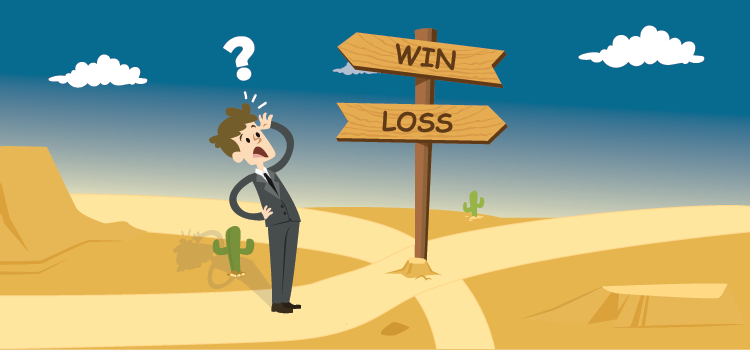Win-Loss Analysis: Is This Option Right for Your Business?
Many people consider that the win-loss analysis may not be required for their business. The easiest solution is to either celebrate the win or distress about the loss. The tougher option is, obviously, to evaluate the cause behind it.
Efficiency is important, especially for an SMB. So the impulse will be to ignore win/loss analysis. But this is a mistake; win-loss analysis can help you fine-tune your sales and focus on the elements of the sale that are most important.
Now that you are interested, let’s talk about what Win-Loss Analysis is and why is it required for your SMB.
How To Do Win-Loss Analysis
A win/loss analysis is a method to understand why a certain sales deal passes and a certain deal fails. Understanding the wins and losses will help in improving the future deals, aligning the tasks in similar pattern and organizing marketing & sales teams better.
Procedure
If you observed this method in any big enterprise then you should know that the procedure includes three stages – pre-interview, interview and post-interview. And the procedure is conducted using third-party members, customers and employees from the firm. However, we are doing this for an SMB so we don’t need too much audience. Also, keeping the business in mind, we don’t want the procedure to be too time consuming.
Conduct this analysis in three stages (keep them short) and over a period of two days. Also, ensure that the analysis happens as soon as the deal is either won or lost.
In the first stage, you need to:
- Identify the interviewer – This person should be independent of any sales activity.
- Identify the members – They should be the head of your sales, marketing and customer service departments.
- Identify the interviewee – Typically the customer to whom you lost or won the deal, and who have consented to attend the interview while keeping the confidentiality.
- Prepare the script – List of questions your interviewer will ask in the discussion. Include sales-related questions and these shouldn’t be more than five to six.
- Set the time limit – Discussions or interviews shouldn’t run more than 20 minutes. Keep it simple and straightforward.
[bctt tweet=”Let’s talk about what Win-Loss Analysis is and why is it required for your SMB.” username=”agilecrm”]
Once you identity the members of the meeting then begin with the interview, where you can quickly explain the purpose of the interview and get down to the questions:
- What factor(s) made you come to this decision?
- Did we tailor our product/service according to your preference? If yes, what was it? If no, what do you need?
- Why did you decide to/not to buy the product/service?
- Could you rate our product/service on a scale of 1-10? What did you like/dislike in particular?
- How was your buying experience? If good, will you recommend us? If bad, how can we improve it?
Now you collect the data based on these questions and evaluate it. Look at the positives that are helping you win more sales. Then scrutinize the negatives that are hampering your wins. Put emphasis on losses as that will help you gain more opportunities for wins.
Considering you understood the basic structure of this analysis, now learn why this can be advantageous to your business:
Key Takeaways Of Win-Loss Analysis
Focus On Lost Deals
Through this analysis, your business can better evaluate the high-level reasons of a win or loss of a particular deal. Once you understand the reason, then the next thing to do is to rectify it immediately. Focus more on the reasons that led to a lost deal and try to eliminate the bottlenecks. Look at the trends, analyze where the team went wrong, and make necessary changes to get better results in the future.
Improve Customer Retention Rate
If you conduct this analysis accurately, you will notice an improvement in the customer retention graph. This is because you are dealing with the customers directly to understand their decision-making process. You are getting insights on what they require from your product/service, why they feel the competition serves them better or if there is any room for improvement. Give the customer the impression that you value their opinion and watch them coming back to you for more.
Convert Lead Into A Customer
Using this analysis, you can get the inside info on your lead’s buying pattern. Let’s say you want to convert a lead into a customer, instead the lead shifted to your competition. To understand why, you do win/loss analysis and examine what went wrong. It can be that the messaging needs to be accurate, follow-ups were not proper or that there was a lack of personalization. Once you know the problem, find a solution and see how swiftly you will turn your leads into customers.
There is a lot that you can do using this analysis, and the result will always be fruitful if you know how to turn this around to benefit your business. The most important objective is to gain the inside data directly from your customers and make appropriate improvements.

No Comments